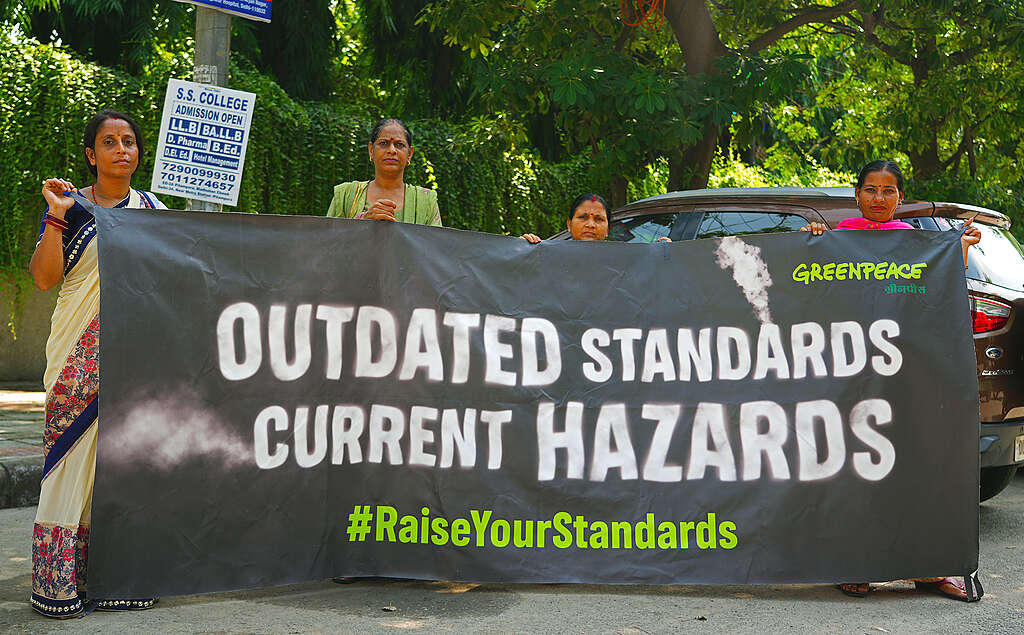
In a dramatic demonstration of the dire conditions of India’s air quality, Greenpeace India’s volunteers and working women cyclists from the Power The Pedal community asked the CPCB ‘Kya Hua Tera Wada?’, in reference to the CPCB’s unfulfilled promise to update India’s air quality standards, in tandem with the WHO guidelines. Two activists donning the hazmat suits, demonstrated from inside a life-sized glass capsule engulfed in dense smoke outside the Center Pollution Control Board (CPCB) headquarters. The spectacle aimed to draw CPCB’s attention to the urgent need to revise India’s National Ambient Air Quality Standards (NAAQS) based on the latest scientific data.
The capsule, housing two individuals in hazmat suits, served as a visual representation of the hazardous air pollution that citizens are forced to endure every single day. Amruta S.N, Greenpeace India’s Climate and Energy campaigner added, “We are running out of time. It’s been more than two years since the WHO revised its air quality standards based on the latest scientific and health-based evidence. Yet we are still waiting on updated air quality standards for India that play a critical role in measuring and combating air pollution. This is the third time we are approaching CPCB demanding urgent action. We cannot afford to wait when we know that people’s health is at stake.”
In addition to the demonstration, Greenpeace also wrote an open letter to the CPCB, reminding them of the petition signed by over 10,000 citizens which was submitted in 2022, demanding the revision of NAAQS to align with the latest WHO air quality guidelines. The petition was followed up in February 2023 by Greenpeace India’s volunteers and Power the Pedal women cyclists who were assured the new standards were in the pipeline and would be released soon.
India’s annual concentration standards for pollutants, including PM2.5 and NO2, remain at a staggering 40 μg/m3. These figures are eight times higher than the World Health Organization’s standards, which recommend limits of 5 μg/m3 for particulate matter and 10 μg/m3 for NO2. The stark disparity between the national and international standards underscores the pressing need for India to revise and strengthen its air quality regulations.
Even under the existing standards, various cities including Delhi have not experienced a single day of clean air in the past two years. Extensive research has unequivocally demonstrated that hazardous air quality poses severe health risks, particularly to marginalised groups such as children, senior citizens, women, daily wage labourers – especially those working outdoors – sexual minorities, and more.
Nitu Thakur, a member of the Power The Pedal community added that the life-sized glass capsule symbolises the present living conditions of Delhi and the pressing need to address the air quality crisis. “Swift action is imperative from the CPCB and other relevant authorities to ensure cleaner air for all. The health and well-being of the nation’s citizens should be a top priority. Updating the NAAQS promptly is just the first step in the fight against air pollution. “
Activists from Greenpeace also stressed that these guidelines should be based on scientific evidence and subject to periodic review every 5 to 10 years. The organisation has urged the CPCB to actively engage with the civil society and scientific community for an inclusive consultation and feedback process to bridge the gap between science and regulation.
Contact Details
Avinash Chanchal, +91 8882153664, [email protected]
Nischita Verrendra, +91 9845828096, [email protected]
